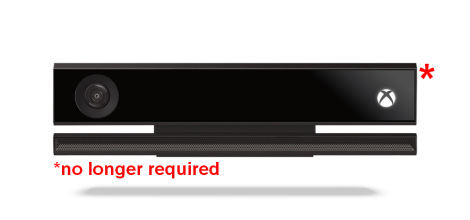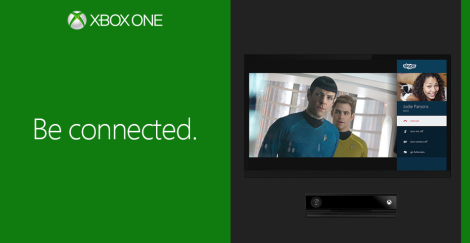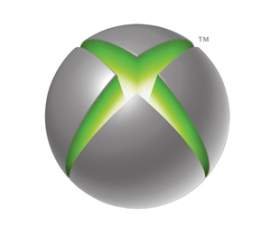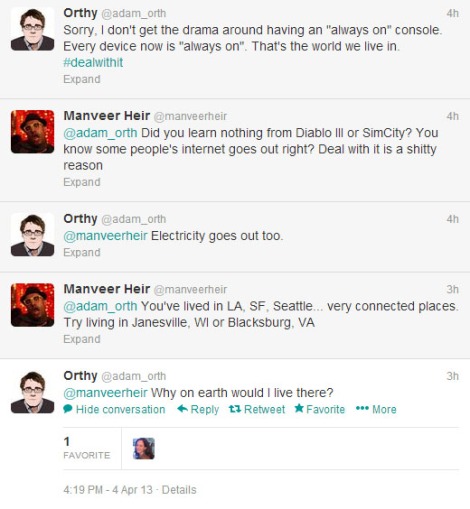Seriously, I’m surprised Microsoft didn’t call their new console the Xbox 180, because that’s what they’ve been doing since their next console’s big reveal. Which is both good and bad really. Good in the sense that they’re actually listening to their customers when it comes to what makes a deal breaker for them. Bad in the sense that this is where Microsoft’s game plan is always going to go on the gaming front, until outside forces (i.e. angry customers threatening sales) stop them and force a course correction.
First came the always-on DRM which outraged consumers – including America’s fighting men and women – causing Microsoft to turn an about face, dropping the always-on and check in once a day requirements. And now yesterday in their latest policy change, the Kinect sensor no longer has to be plugged in for the console to function.
The news came from Chief Xbox One Platform Architect Marc Whitten in an ongoing “Ask Microsoft Anything” segment on IGN, where he addressed users’ Kinect questions yesterday. When asked how “off” the sensor would be when plugged in, Whitten responded that it can be set to “totally” off in the console settings. He went on to state that the Kinect sensor will be optional in games where supplemental content calls for it, but naturally would be required for games that focus on Kinect functionality as the primary mode of gameplay:
You have the ability to completely turn the sensor off in your settings. When in this mode, the sensor is not collecting any information. Any functionality that relies on voice, video, gesture or more won’t work. We still support using it for IR blasting in this mode. You can turn the sensor back on at any time through settings, and if you enter into a required Kinect experience (like Kinect Sports Rivals for instance), you’ll get a message asking if you want to turn the sensor back on in order to continue.
Right – if the word “Kinect” is in the title of the game, you’re going to still need it to play. And this information is all thanks to a user that asked about the always plugged in requirement and what would happen if their sensor broke. Thanks, random user.
According to Whitten and the others who have spoken on Microsoft’s behalf in the past, the Xbox One is still designed to work with the Kinect, not only for gameplay of certain games but for SmartGlass, search, and UI navigation in general. So if you were planning on buying an Xbox One as your new “one” all-serving console, there’s still that stuff you can use it for.
So who knows what’s going on? Maybe they’re feeling threatened by the PS4 and are dropping restrictions to pull in those on the fence outside of the Microsoft die-hards. Maybe they’ve survived a crisis of conscience. Maybe their PR doesn’t want any perception issues after all the recent news and events about digital spying. Either way, this is another 180 from their former draconian policies that console gamers should be able to get behind. That’s not changing their sales strategy though. Even though we now know that the Kinect won’t be required to fire up a game on Xbox One, Microsoft still has no plans of selling the console without it at their $500 price point because of that UI design integration they described. Personally I think selling a non-Kinect version at maybe $400 would get them more sales, because I don’t care how much money you’ve got – $100 is $100. But that’s just me.
I said before publicly that I wouldn’t buy an Xbox One and would go the Sony PS4 route if those old policies from Microsoft remained in place. Now that they’re gone, it’s something I might actually consider.
You know, if I buy a new console at all.
Tushar Nene
Staff Writer
@tusharnene
 Backpedal (verb): to retreat or move backward.
Backpedal (verb): to retreat or move backward.
Last night the internet saw Microsoft go into full backpedal mode on their DRM practices for the upcoming Xbox One in a post on their site titled “Your Feedback Matters – Update on Xbox One.” The post was courtesy Don Mattrick, the President of Microsoft’s Interactive Entertainment Business unit, and seemed to address a score of concerns gamers had following the product launch event and E3. Citing that his people had heard directly from many fans (read: pages upon pages of ASCII middle fingers on their Facebook page), he announced that DRM practices for the Xbox One would be somewhat rolled back to how they are for the Xbox 360. Here were the main hits:
An internet connection will not be required to play offline Xbox One games – After a one-time system set-up with a new Xbox One, you can play any disc based game without ever connecting online again. There is no 24 hour connection requirement and you can take your Xbox One anywhere you want and play your games, just like on Xbox 360.
Trade-in, lend, resell, gift, and rent disc based games just like you do today – There will be no limitations to using and sharing games, it will work just as it does today on Xbox 360.
This means that if I want to lend my friend a game I just need to give them the disc. Things will mostly roll on like it currently does for the Xbox 360 generation. It’s a good thing that Mattrick and his crew rolled these back if for no one’s sake than their own too, because things were starting to look pretty grim for team Microsoft on the gaming front. Their licensing model was convoluted and strange for borrowing discs and game rentals. Military personnel were calling it “a sin against all service members.” And then there was Sony, their main competition for the last couple generations of gaming consoles, absolutely drilling them on their policies with not only their own business practices but veiled commercials targeting Microsoft to the delight of all watching. I mean we all remember this video on sharing games from PlayStation’s YouTube channel, right?
Did anyone else get a very thumbs up / thumbs down Gladiator vibe from that whole thing? I sure did, and it was hilarity that won in the arena.
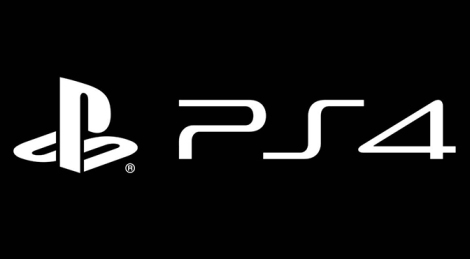 Sony had the pole position in the console press conferences, showing off the PS4 hours after Microsoft was shilling the One. After the disappointment of many after the Xbox One show, Sony had the opportunity to say “Hey guys, don’t worry! We’re still here to save you!” And it worked. Like gangbusters, kids. Sony offered a unit that cost less, had better hardware specs, nixed the DRM, had no requirement for an always on, always listening camera, and didn’t charge $60 a year for online services. How can you lose with that kind of show?
Sony had the pole position in the console press conferences, showing off the PS4 hours after Microsoft was shilling the One. After the disappointment of many after the Xbox One show, Sony had the opportunity to say “Hey guys, don’t worry! We’re still here to save you!” And it worked. Like gangbusters, kids. Sony offered a unit that cost less, had better hardware specs, nixed the DRM, had no requirement for an always on, always listening camera, and didn’t charge $60 a year for online services. How can you lose with that kind of show?
So was it Sony putting pressure on Microsoft by just being themselves or was it truly the Xbox team listening to their fans. “We have listened and we have heard loud and clear from your feedback that you want the best of both worlds,” Mattrick said on the Xbox Wire. Maybe it should have read “Pleas guys, don’t leave us for Sony.” It was probably a combination of both. And that’s what’s awesome about the whole thing. What this showed was that the gaming industry can still be affected by competition and vox populi – even though companies run on margin and greed, that they can shift gears when they previously said they can’t when their dollars are threatened. It’s the beauty of the system – a company can shift gears once they realize that consumers aren’t going for what they’ve got. And to the conspiracy theorists, no, I don’t think this was a planned stunt from the get go to come off harsh then pick up the image of “listening to the fans.” That strategy would have only worked if they had a PS4-killer level function in the Xbox One, which they didn’t. In all I’m glad they rolled back the DRM, but I think the damage is still done.
And that’s my opinion regardless of the borderline insane ramblings of Cliffy B, who claims that it was Sony alone, and not the “whiny internet” that forced Microsoft’s hand.
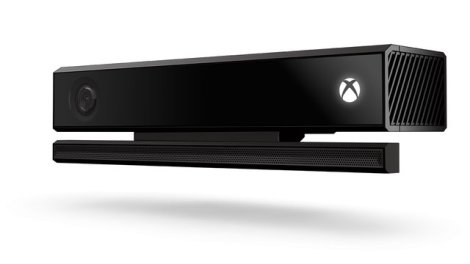 Sony still has a lot of those advantages listed above going for them. The price of the PS4 is still about $100 less than the One, and that also comes with no yearly payments for online services. And money is always a factor. It was part of the reason for the success of Nintendo’s first Wii console after all. But the other disadvantage they still maintain is the Kinect requirement. The Kinect still has to be plugged in and powered on for the console to function, keeping my privacy concerns right where they are. Enough to make the fact that they rolled back the DRM, while fundamentally good, also completely moot. I still need more than “I promise Nene, I’m not listening” to make it happen for me.
Sony still has a lot of those advantages listed above going for them. The price of the PS4 is still about $100 less than the One, and that also comes with no yearly payments for online services. And money is always a factor. It was part of the reason for the success of Nintendo’s first Wii console after all. But the other disadvantage they still maintain is the Kinect requirement. The Kinect still has to be plugged in and powered on for the console to function, keeping my privacy concerns right where they are. Enough to make the fact that they rolled back the DRM, while fundamentally good, also completely moot. I still need more than “I promise Nene, I’m not listening” to make it happen for me.
Final verdict: Sony still has the upper hand.
Tushar Nene
Staff Writer
@tusharnene
 Remember a while back when former Xbox director Adam Orth put his foot in his digital mouth, tweeting to us all that if there is an always on connection (of course before they confirmed it) that we can all #dealwithit? As you know, I had some fundamental problems with the sentiment. Orth went on to be completely dismissive about folks that didn’t have a constant and reliable internet connection. That covers a lot of folks – gamers that live in the rural United States without broadband or have to rely on spotty satellite service as well as members of our armed services that are deployed abroad. I spoke to some of my friends in uniform when that information came out, and they were unanimously unpleased. Gaming is how some of them blow off steam while deployed in remote areas or at sea, and a requirement for online check ins with the inability to play offline without one puts that to an end.
Remember a while back when former Xbox director Adam Orth put his foot in his digital mouth, tweeting to us all that if there is an always on connection (of course before they confirmed it) that we can all #dealwithit? As you know, I had some fundamental problems with the sentiment. Orth went on to be completely dismissive about folks that didn’t have a constant and reliable internet connection. That covers a lot of folks – gamers that live in the rural United States without broadband or have to rely on spotty satellite service as well as members of our armed services that are deployed abroad. I spoke to some of my friends in uniform when that information came out, and they were unanimously unpleased. Gaming is how some of them blow off steam while deployed in remote areas or at sea, and a requirement for online check ins with the inability to play offline without one puts that to an end.
Those statements seem to be resonating with American military personnel. For example US Navy Lieutenant Scott Metcalf, according to reports from The Navy Times, has gone from eagerly awaiting his console’s arrival to not even being sure that he’ll be buying one from Microsoft. The always on policy as well as other aspects of the Xbox are what he calls “showstoppers.” Here’s what a Microsoft spokesperson told the Military Times about Xbox functionality:
“With Xbox One you can game offline for up to 24 hours on your primary console, or one hour if you are logged on to a separate console accessing your library. Offline gaming is not possible after these prescribed times until you re-establish a connection”
The Times outline the other problems that Lt. Metcalf and others have with the new device. For starters, the Xbox One is only supported in 21 countries – meaning it’s unavailable to any personnel deployed outside of those zones. If somehow the lucky military gamer in question is in one of those 21 countries, games are region locked, so guess what? No buying games locally or firing up a disc from home – because if your XBox Live account is linked to a different region, you’re looking at no joy.
More so than the always on component of the console and the inability to play games offline – or even really at all in some cases, is the security issues. This is a huge issue in the past couple weeks, especially considering Germany’s consideration to ban sales of the console considering it a surveillance device. It’s absolutely no surprise to me that the US military feels the same way. In your living room, an always on (and always listening) Kinect unit might pick up a conversation between you and your friends, or where you want to order takeout from. Now imagine that you living room is actually a military unit, where a Commander has a lot more to worry about being picked up than a food order.
Metcalf isn’t the only one with issues. Naval aviator Jay Johnson is outspoken about the topic as well. Johnson, who served tours on three Nimitz-class carriers, describes gaming as “my sanctuary. It is where I went to calm down after a long day of flying.” In a piece he wrote for Gamasutra, he describes it simply as “the single greatest sin Microsoft has committed against all service members.” And he’s right.
 What makes this whole thing even worse is Microsoft’s attitude about the whole thing. While our military personnel are losing a way to escape their sometimes harsh realities, Don Mattrick keeps on with a “sucks to be you” demeanor, stating that if they don’t want a console that has an always on component, that they can always buy an Xbox 360, which allows full-time offline play.
What makes this whole thing even worse is Microsoft’s attitude about the whole thing. While our military personnel are losing a way to escape their sometimes harsh realities, Don Mattrick keeps on with a “sucks to be you” demeanor, stating that if they don’t want a console that has an always on component, that they can always buy an Xbox 360, which allows full-time offline play.
His words in an interview at E3 reflect that:
“When I read the blogs and thought about who’s really the most impacted, there was a person who said, ‘Hey, I’m on a nuclear sub.’ I don’t even know what it means to be on a nuclear sub, but I’ve got to imagine that it’s not easy to get an Internet connection. Hey, I can empathize. If I was on a sub, I’d be disappointed.”
Great, they empathize. Too bad they’re not going to do anything about it. There haven’t been any plans or even words on their part to address the issue. Buthey, they’ve got a 360 for you. It’s absolutely shameful that in a room where these things are discussed at Xbox HQ, there was absolutely no foresight to what their policies could mean for our fighting men and women having a little piece of home when they’re deployed abroad. Said best by Johnson –
“No longer will the sounds of Master Chief saving the human race echo through the hallowed halls of the USS Abraham Lincoln, or any other USS ship, when we have a few hours respite. No longer will you see Marcus and Dom sawing through the Locust Horde at the bases in Afghanistan after the Marines have returned from patrol and want to escape their reality for a bit. Those days are now firmly behind us.”
Tushar Nene
Staff Writer
@tusharnene
** Updated Info on the Xbox One and internet connections **
In my earlier post talking covering the big Xbox One reveal today, I got a little bit into the whole always on issue. From those who had hands-on experience with the One, it seemed that it would be only games that utilized Microsoft’s Azure cloud platform that would require an internet connect to play. Well I’m very sad to report that that’s not totally the case. Let’s hop over to the Xbox press site, where they’ve posted a Q&A describing a lot of Xbox features. On a question on always-on, this is what they’ve posted:
Q: Does Xbox One require an “always on” Internet connection?
A: No, it does not have to be always connected, but Xbox One does require a connection to the Internet. We’re designing Xbox One to be your all-in-one entertainment system that is connected to the cloud and always ready. We are also designing it so you can play games and watch Blu-ray movies and live TV if you lose your connection.
OK…
That doesn’t make a lick of sense!
Unfortunately for me my day job keeps me on the east coast and without an invitation to Redmond to ask further questions on what’s going on. Kotaku’s Stephen Totilo on the other hand does have that opportunity. When Stephen pressed for an answer, what he received was the following:
“For single-player games that don’t require connectivity to Xbox Live, you should be able to play those without interruption should your Internet connection go down. Blu-ray movies and other downloaded entertainment should be accessible when your Internet connection may be interrupted. But the device is fundamentally designed to be expanded and extended by the Internet as many devices are today.” After some more digging, here is what always means as far as Xbox is concerned:
The Xbox One checks in with the cloud once every 24 hours.
It’s a technicality that allows Team Xbox to say that they don’t require an always on connection to play. But it ain’t exactly forever. So fine, instead of being shackled to a network, we’re now all… on parole? Are the 300,000 Xbox LIVE servers my parole officers? Do I get time off for good behavior?
I have no idea what happens if you don’t check in every 24 hours, but I can’t imagine it’s good. I have my Xbox 360 turned completely off unless I’m playing. It’s not listening for my voice commands, it turns on when flip a physical switch. As it stands at the moment of writing this I haven’t turned my Xbox on in roughly a week. With these rules on the One, am I going to be restricted because I haven’t checked in for a week?
Anyway, no, I guess it’s not as bad as the three minute rule that was rumored before, but it’s still something that’s a pain in the ass. Just letting you kids know.
Tushar Nene
Staff Writer
@tusharnene
 Just a little while ago from their Redmond campus, Microsoft finally pulled the curtain and gave us all the big reveal on their successor to the Xbox 360 – The Xbox One, announcing that it will be available later in 2013. Not to be confused with the old classic Xbox 1, the new unit is geared to be an all-in-one box as described by Xbox exec Don Mattrick. Sitting next to the this all-in-one box was a new Kinect sensor, as well as the newly designed controller. I watched the live stream (well as much as I could) and while it didn’t provide a ton of helpful information, there was some.
Just a little while ago from their Redmond campus, Microsoft finally pulled the curtain and gave us all the big reveal on their successor to the Xbox 360 – The Xbox One, announcing that it will be available later in 2013. Not to be confused with the old classic Xbox 1, the new unit is geared to be an all-in-one box as described by Xbox exec Don Mattrick. Sitting next to the this all-in-one box was a new Kinect sensor, as well as the newly designed controller. I watched the live stream (well as much as I could) and while it didn’t provide a ton of helpful information, there was some.
What was Covered:
What was showed off was voice control – with the unit being powered on by a user simply saying “Xbox on.” Using voice, the controller, or gesture commands with the Kinect sensor, the user can easily switch between the Xbox Live UI and Live TV. The UI itself is is very Windows 8 in the sense that there’s tiles for a lot of things on the interface. This isn’t really that surprising considering that with Windows 8 Microsoft was pushing a lot of their services and devices into a connected ecosystem, shoving Xbox under that umbrella as well. Part of that is pretty sweet connectivity, with special software designed to be able to connect between a Windows OS as well as the Xbox interface. It also seems that Microsoft has learned from their HD-DVD missteps with the 360, giving the One an optical drive that supports Blu-ray discs. The unit handles games, internet and web apps, Skype functionality as well as live TV. That seems pretty close to the “all-in-one” description that Mattrick was talking about, adding that it must be “simple, instant, and complete.” I guess “complete” also means that the system can pick up and measure your heartbeat while you exercise.
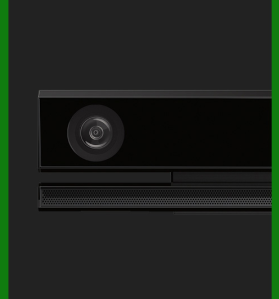 There was also some description on the controller, designed with improved ergonomics and a new D-pad, designed with gamers helping to make it better for gamers.
There was also some description on the controller, designed with improved ergonomics and a new D-pad, designed with gamers helping to make it better for gamers.
As for the rest of the livestream itself, there was a big to-do about the partnership between Xbox and EA, showing off a bunch of games from EA Sports including FIFA, UFC, Madden and FIFA, all to be released over the next year. The EA montage came with the unveiling of EA Ignite, an engine designed “specifically to help us blur the line between the real and the virtual,” according to Andrew Wilson.
The Xbox folks also announced that there would be 15 exclusive titles for the Xbox One over the year, showing one of them (presumably) as Quantum Break, which appeared to focus around a kid with superpowers. Claiming that they’re investing more in a bunch of studios around the world to create original content, they say that these 15 exclusives will cover 8 different and brand new franchises.
Next came some celebrity guests from different areas of entertainment. Steven Spielberg joined via teleconference to talk about a new Halo live action television show, broadcast as “premium television” through the Xbox One. I for one don’t really care, but if that’s you’re thing, well there you go. Roger Goodell, commissioner of the NFL, also stopped by on screen talking about the partnership between Xbox and the NFL: “You’re going to change the football in a way that is so dramatic.”
 They closed out the livestream with a preview of Call of Duty: Ghosts, focusing a great deal on the fact that the game has dogs in it, at which point my stream started flipping out, but it seemed like they revealed very little information on it as well as other games for that matter. I guess they’re saving it all of e3.
They closed out the livestream with a preview of Call of Duty: Ghosts, focusing a great deal on the fact that the game has dogs in it, at which point my stream started flipping out, but it seemed like they revealed very little information on it as well as other games for that matter. I guess they’re saving it all of e3.
Funny sidenote about the stream flipping out – I lost the stream 3-4 times through the whole proceedings, one of them being just as they were talking about how they have 300,000 servers to support Xbox Live. Unfortunately none of them allowed xbox.com to get through 15 minutes of stream without crashing.
Oh right – machine specs:
- Processor: Custom AMD chip, 8-core GPU, DirectX 11.1, 32MB ESRAM (28nm chip for those interested in fabrication)
- Memory: 8GB RAM (DD3)
- Storage: 500GB internal hard drive
- Audio/Video: 1080p and 4K support, can do 7.1 surround
- Connectivity: HDMI 1.4 output/passthrough, USB 3.0, WiFi Drect
What Wasn’t:
While they kept saying that the Xbox One was connected, they didn’t explicitly address fans’ concerns about “always on.” I had to get intel from other sources who had a more hands on experience with the One for that. According to Wired, the One will not be always on as was heavily rumored. Which begs the question, how did THIS WHOLE NONSENSE even occur in the first place? I don’t know. I guess folks can get a little nuts in the twitterverse. But I found out some other things too:
While it may not be always on, game discs will all have to be downloaded to the console’s internal hard drive (which makes me really worry about only a 500GB hard drive). But once the data is on said hard drive, the user can play it whenever he or she chooses, and it will be connected to their XBL gamertag. But if that disc is used with a different account, the person holding that second account has the option of paying a fee to install it to his or her hard drive and play. Without that download though, play with just the disc and not copying anything to the hard drive is restricted. According to Wired, Microsoft didn’t have an answer as to if or even how this policy would potentially be altered for the used games market or players that rent games.
As far as the “always” on rumors? Yes and no. Game developers making games for the One have access to use Microsoft’s Azure cloud services platform to bump some of the game tasks to the cloud. In this case yes you would require an internet connection. If a game in question does not actually utilize Azure, then no, you will not need a connection. I have no basis to make a prediction on what percentage of Xbox One games will utilize Azure, but my guess is that Microsoft is really going to try and push it.
So there it is in a nutshell kids. I’ll keep my eye out for further details to keep you in the know.
Tushar Nene
Staff Writer
@tusharnene


